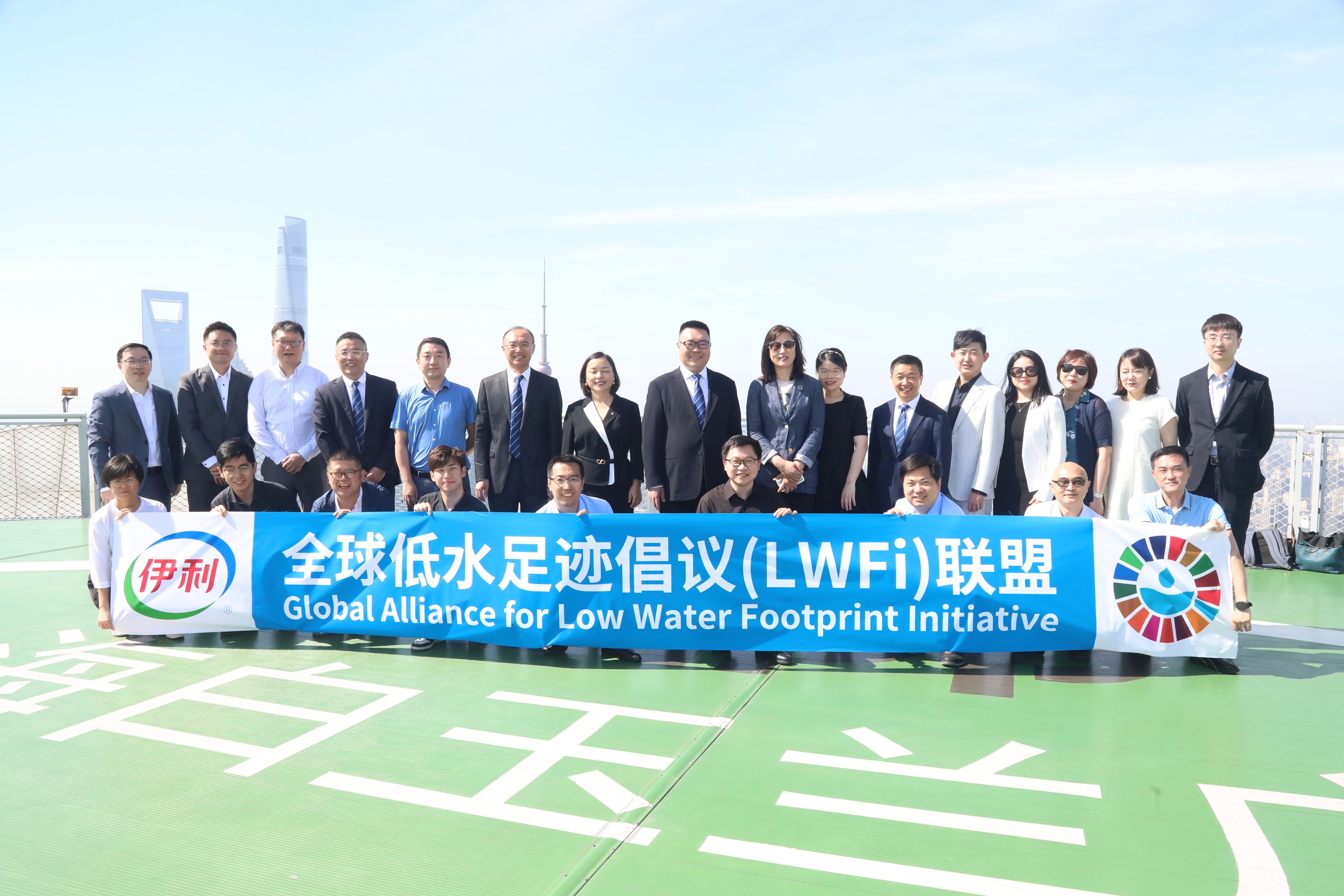Progress report for
Commitment for United Nations Water Action Agenda

Achievement at a glance
Achievement at a glance:In 2023, as the leading unit of LWFi, Yili Group achieved the following results in water resource management:
①Total 31 factories have been awarded the title of “water-saving enterprise” by local authorities.
② The total water consumption of Yili’s group (all factories included) has decreased by 6.14% compared to 2022.
③ Yili focuses on carrying out water-saving projects in factories located in areas with high water risk levels. In 2023, the number of water-saving projects carried out by high and medium-high water risk level factories accounted for 74.08% of the total number of water-saving projects. The total water savings reached over 1.77 million tons in 2023.
⑤ The utilization rate of alternative water sources (grey water, rainwater, sewage) reached 4.29% in 2023.
⑥ The reuse rate of reclaimed water has been increased to 12.72% in 2023.
⑦ Yili Group reached 100% utilization rate of refrigeration ice water and cooling tower water circulation.
Challenges faced in implementation
①With the growth of global population and economic development, the demand for water resources continues to increase, but the supply of water resources is affected by natural conditions and human activities, leading to increasingly serious water shortage problems. The water supply for dairy raw materials in the industrial chain does not match the local water resources situation.②Many enterprises and industries have low efficiency in the use of water resources during production and operation, resulting in a large amount of waste. This not only increases the cost for enterprises, but also exacerbates the shortage of water resources.
③Collaborative water-saving in the industrial chain requires close cooperation and coordination among enterprises and industries. However, due to differences in interests among enterprises and the lack of a unified coordination mechanism, achieving collaborative water-saving is difficult.
④The lack of effective water-saving technologies and equipment in the current market has led to technical challenges for agriculture and animal husbandry in implementing water-saving measures.
⑤At present, the laws and regulations on water resource management and water-saving are not yet perfect, leading to a lack of clear guidance and norms for enterprises to implement water-saving measures.
Next Steps
Yi MengBeneficiaries
①Enterprises: Enterprises are the main implementers and beneficiaries of water-saving in the industrial chain. By adopting water-saving measures, enterprises can reduce production costs, improve water efficiency, and reduce water resource waste. Meanwhile, water conservation also helps to enhance the environmental image of enterprises and enhance their competitiveness.
②Upstream and downstream enterprises in the industrial chain: Water conservation in the industrial chain not only involves individual enterprises, but also upstream and downstream enterprises throughout the entire industrial chain. Upstream enterprises can provide water-saving technology and equipment to help downstream enterprises achieve their water-saving goals; Downstream enterprises can reduce their own water costs, improve product quality and market competitiveness by using water-saving technologies and products.
③Public: Water is the source of life and an important fundamental resource for the development of human society. Water conservation in the industrial chain not only helps alleviate water resource shortages, but also improves the water environment and protects the ecological environment. The public, as users and protectors of water resources, are also beneficiaries of water-saving in the industrial chain.
④Government: The government is an important responsible entity for water resource management and protection. By promoting water-saving in the industrial chain, the government can promote the rational utilization and protection of water resources, improve the efficiency of water resource utilization, and promote sustainable economic and social development. At the same time, water-saving also helps to reduce the occurrence of water pollution and water disasters, and lower the government's costs in water resource management.
Actions
①Promoting water footprint certification: By continuously promoting the accounting and certification of organizational water footprint and product water footprint through the industrial chain, enterprises can better manage their water use and product water footprint based on the life cycle theory, and promote the development of the dairy industry towards low water footprint and low-carbon footprint.②Optimize production process: By improving production processes, updating water-saving equipment, optimizing production processes, and other measures, reduce water consumption in the production process and improve water efficiency.
③Strengthen water resource management: Establish a water resource management system, clarify the responsibilities and tasks of each department, develop water use plans and indicators, and ensure the rationality and effectiveness of water use.
④Promote water-saving technology: Actively introduce and promote advanced water-saving technologies and equipment, such as circulating water systems, low flow water tools, etc., to reduce water consumption in the production process.
⑤Strengthen publicity and education: Through publicity and education, enhance the water-saving awareness of employees and the public, advocate for a water-saving and reasonable way of life and work.
⑥Establish a cooperation mechanism: Strengthen cooperation between enterprises, establish a water-saving cooperation mechanism in the industrial chain, jointly promote water-saving work, and achieve resource sharing and mutual benefit.
⑦Establish a supervision mechanism: By monitoring and evaluating the water-saving work of suppliers, regularly inspecting and evaluating the implementation effect of water-saving measures, and gradually phasing out high water consuming suppliers.
